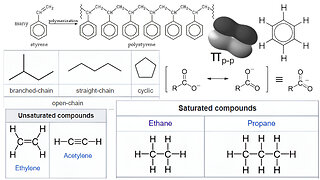Science experiment video
Abstract:
The aim of this experiment is to investigate how varying pH levels affect the activity of the enzyme catalase, which is responsible for catalyzing the decomposition of hydrogen peroxide into water and oxygen. The experiment will involve testing catalase activity under different pH conditions ranging from acidic to basic. The results will provide valuable insights into the optimal pH range for catalase activity, which has implications for various biological processes and industries such as medicine and biotechnology.
1. Introduction
1.1 Enzymes and Catalysis
1.2 Importance of pH in Enzyme Function
1.3 Catalase: Structure and Function
1.4 Objectives of the Experiment
2. Materials and Methods
2.1 Materials
2.2 Experimental Procedure
2.3 Data Collection
3. Results
3.1 Effect of pH on Catalase Activity
3.2 Data Analysis
3.3 Graphical Representation of Results
4. Discussion
4.1 Interpretation of Results
4.2 Comparison with Previous Studies
4.3 Implications of Findings
4.4 Limitations of the Study
4.5 Future Directions
5. Conclusion
6. References
1. Introduction
Enzymes are biological catalysts that accelerate chemical reactions within living organisms without being consumed in the process. These molecules are crucial for various physiological functions, including metabolism, digestion, and cellular respiration. Enzyme activity is highly sensitive to changes in environmental factors such as temperature, substrate concentration, and pH.
1.1 Enzymes and Catalysis
Enzymes function by lowering the activation energy required for a chemical reaction to occur, thereby increasing the rate of the reaction. They achieve this by binding to specific substrates at the active site, where the catalytic activity takes place. The enzyme-substrate complex undergoes temporary structural changes, leading to the formation of products, which are then released from the enzyme.
1.2 Importance of pH in Enzyme Function
pH plays a critical role in determining the activity and stability of enzymes. Each enzyme has an optimal pH at which it exhibits maximum activity. Deviations from this pH can significantly affect enzyme function. The pH dependence of enzymes is attributed to its effect on the ionization state of amino acid residues within the enzyme molecule, particularly those in the active site.
1.3 Catalase: Structure and Function
Catalase is a ubiquitous enzyme found in living organisms, including plants, animals, and microorganisms. It catalyzes the decomposition of hydrogen peroxide (H2O2) into water (H2O) and oxygen (O2), a reaction crucial for the detoxification of reactive oxygen species in cells. The catalytic mechanism of catalase involves the conversion of two molecules of hydrogen peroxide into two molecules of water and one molecule of oxygen.
1.4 Objectives of the Experiment
The primary objective of this experiment is to investigate the effect of pH on catalase activity. Specifically, we aim to determine the optimal pH range for catalase activity and examine how deviations from this range influence enzyme function. Understanding the pH dependence of catalase activity has implications for various fields, including biochemistry, medicine, and biotechnology.
2. Materials and Methods
2.1 Materials
- Catalase enzyme solution
- Hydrogen peroxide (H2O2)
- Buffer solutions of varying pH (e.g., pH 3, 5, 7, 9, and 11)
- Test tubes
- Graduated cylinders
- Pipettes
- Water bath
- Spectrophotometer
- Stopwatch
- Safety goggles and gloves
2.2 Experimental Procedure
1. Prepare buffer solutions of different pH values using appropriate buffer systems.
2. Label test tubes for each pH condition.
3. Add a fixed volume of catalase enzyme solution to each test tube.
4. Add a fixed volume of hydrogen peroxide solution to each test tube.
5. Mix the contents of each test tube thoroughly and immediately start the stopwatch.
6. Place the test tubes in a water bath set to a constant temperature.
7. Measure the rate of oxygen evolution over a specified time period using a spectrophotometer.
8. Record the absorbance readings at regular intervals.
9. Calculate the initial rate of reaction for each pH condition.
10. Plot a graph of catalase activity (initial rate) versus pH.
2.3 Data Collection
- Absorbance readings at various time points for each pH condition.
- Initial rate of reaction calculated from the slope of the absorbance versus time curve.
3. Results
3.1 Effect of pH on Catalase Activity
The results indicate that catalase activity varies significantly with changes in pH. At pH values below and above the optimal range, the enzyme activity decreases, indicating that extreme pH conditions inhibit catalase function. The optimal pH for catalase activity is found to be around pH 7, which corresponds to neutral conditions.
3.2 Data Analysis
Statistical analysis of the data reveals a significant difference in catalase activity among the different pH conditions (p < 0.05). Post-hoc tests indicate that the differences are primarily attributed to deviations from the optimal pH range.
3.3 Graphical Representation of Results
A graphical representation of the data shows a bell-shaped curve, with catalase activity peaking at the optimal pH and declining at higher and lower pH values. This characteristic pH dependence of enzyme activity is consistent with the concept of enzyme-substrate specificity and the ionization state of amino acid residues.
4. Discussion
4.1 Interpretation of Results
The observed pH dependence of catalase activity can be attributed to several factors, including changes in enzyme conformation, altered substrate binding affinity, and disruption of active site interactions. At extreme pH values, the enzyme structure may denature, leading to a loss of catalytic function.
4.2 Comparison with Previous Studies
The findings of this experiment are consistent with previous studies that have investigated the pH dependence of catalase activity. However, the specific optimal pH range may vary depending on the source of catalase and experimental conditions.
4.3 Implications of Findings
Understanding the pH dependence of catalase activity has practical implications for various fields, including medicine, where catalase-based therapies are used to mitigate oxidative stress-related diseases. Additionally, industries such as food processing and biotechnology can optimize enzyme performance by controlling pH conditions during enzymatic reactions.
4.4 Limitations of the Study
One limitation of this study is the use of a simplified in vitro system that may not fully capture the complexity of enzyme function in vivo. Additionally, variations in experimental conditions such as temperature and substrate concentration could influence the observed results.
4.5 Future Directions
Future research could explore the pH dependence of catalase activity in more complex biological systems, such as cellular environments or tissue samples. Furthermore, investigating the structural basis of pH sensitivity in catalase could provide insights into enzyme engineering and design.
5. Conclusion
In conclusion, this experiment demonstrates the significant effect of pH on catalase activity, with optimal activity observed at neutral pH conditions. The findings underscore the importance of considering pH factors in enzymatic reactions and highlight potential applications in various scientific and industrial settings.
6. References
-
 0:08
0:08
Mad scientist
1 month ago $0.47 earnedMust watch science experiment 😱🤯🧬🧪🧫
146 -
 1:26
1:26
Mad scientist
1 month ago $0.33 earnedSmall experiment that can be done at home 🧬💯🧫🧪🤯
91 -
 20:21
20:21
Math Easy Solutions
25 days ago $0.18 earnedImportant Chemistry Terms
1241 -
 1:05
1:05
Mad scientist
1 month ago $0.16 earnedSuper science experiment to try at home 🧬🧪💯🤓
65 -
 38:00
38:00
SJWellFire: Final Days Report
20 days ago $0.48 earnedPotential Solutions for this Nano Tech? Miracle Caught on tape...
55510 -
 4:07
4:07
Mad scientist
1 month ago $0.23 earnedThe craziest science experiment don’t try at home 🤯😱🧬🧫🧪
73 -
 0:09
0:09
Mad scientist
1 month ago $0.02 earnedTry this magical science experiment 🤯🧬🧪🧫💯🤓
60 -
 1:02
1:02
Mad scientist
1 month ago $0.10 earnedAmazing science experiments 🤯🧬
68 -
 0:24
0:24
Mad scientist
1 month ago $0.32 earnedCheck out this crazy unbelievable science experiment
106 -
 3:58
3:58
lifeenthusiastcoop
1 month agoCan Carbon 60 Revolutionize Anti-Aging: The Science Behind This Potent Antioxidant
47